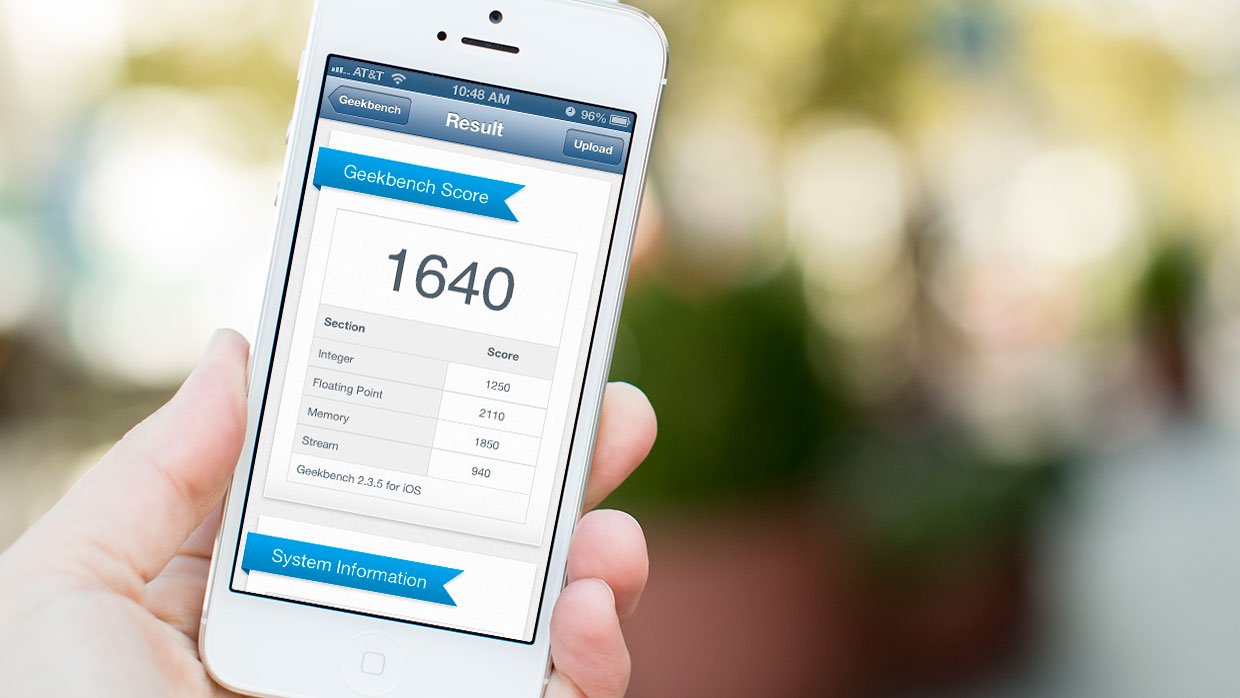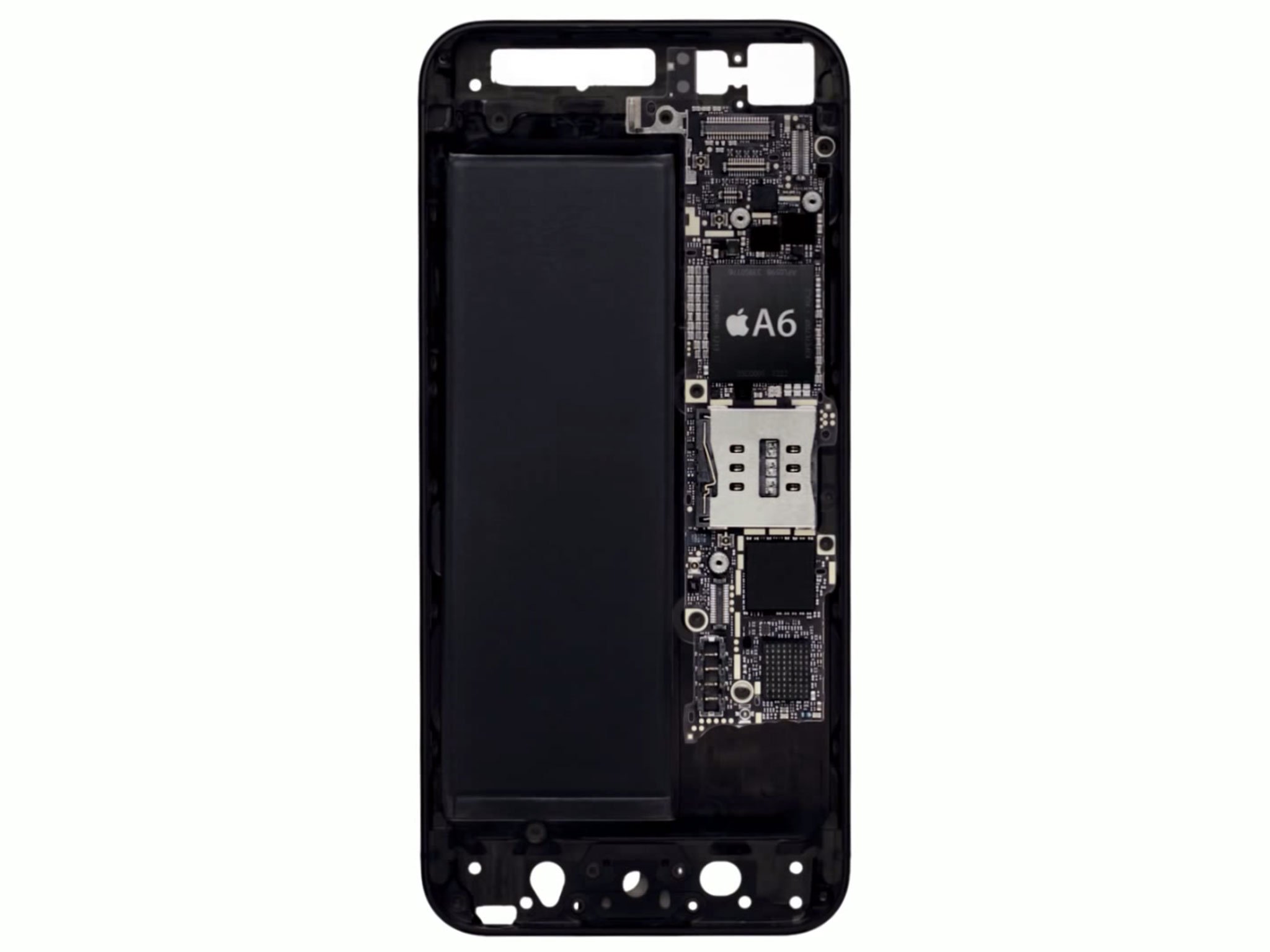Imagining iPhone 5S and iPhone 5C: Apple A7 processor, RAM, and Storage

Analyzing rumors and speculation surrounding Apple's 2013 iPhone 5s and iPhone 5c systems-on-a-chip, memory, NAND flash capacity, and more
UPDATE: Apple has officially announced the iPhone 5s and we've now got a full Apple A7 processor preview, with everything you need to know!
If Apple holds to pattern, we're in the tock year of their tick tock hardware release schedule. That means that while we may not get any exciting new external designs, we should be in for some amazing new internals, including the system-on-a-chip, storage, radios, cameras, and other components. Faster. Better. Stronger. At least for the iPhone 5s. The iPhone 5c will likely be the exception that proves the rule, becoming the less expensive option by saving all its changes for the outside. So what will all that translate into when the silicon hits our hands?
iPhone 5s: Going Rogue

Apple started designing their own custom processors with the Apple A4 system-on-a-chip (SoC) for the original iPad in 2010. They brought that SoC to the the iPhone 4 later the same year. It sported an ARM Cortex-A8 CPU, a PowerVR SGX 535 GPU, and 512MB of RAM fabricated at 45nm, along with some performance enhancements supplied by Instrisity, a company Apple later bought. With the iPad 2 in 2011, Apple introduced the dual-core Apple A5 SoC. It upped the ante to a ARM Cortex-A9, a PowerVR SGX543MP2 GPU, and 512MB of RAM, and the iPhone 4S got it later that year as well. The Apple A5 was originally fabricated at 45nm but Apple reduced it to 32nm in 2012 for the updated iPad 2, Apple TV 3, and iPod touch 5. They also added a quad-core PowerVR SGX543MP4 and introduced the Apple A5X for the Retina iPad 3.
For the Apple A6 SoC in the 2012 iPhone 5, instead of sticking with the Cortex A9 or moving on the new ARM A15, they did some more aggressive, and a lot more impressive. They licensed the ARM v7s instruction set and rolled something uniquely their own. It was a 32nm CMOS dual-core Apple processor -called Swift - that could run from between 800MHz and 1.2GHz. Likewise, instead of going with the dual-core PowerVR SGX543MP2 graphics chip found in the iPhone 4S, or the giant quad-core PowerVR SGX543MP4 found in the iPad 3, Apple went with the triple-core PowerVR SGX543MP3 GPU. And they topped it all off with 1GB of RAM. The iPad 4 later got the Apple A6X with a quad-core PowerVR SGX543MP4 GPU.
With the Apple A7, we'll likely see a second generation Swift processor, benefitting from everything Apple learned from the first, and the advancements they've made since then. Like Intel's Haswell on the Mac, that could mean less of a speed boost and more of an efficiency boost, allowing the iPhone 5s to do more while slurping less power. Let's face it, the iPhone 5 is plenty fast enough for what most people do most of the time on mobile. It's battery life that still causes the grief. If Apple and their fab can reduce the die size down below 32nm, that would help a great deal as well.
The only exception to this might be graphics. iOS 7 is built on a gaming-style physics and particle engine. All those gaussian blur shaders come at a price, however. Apple has stuck with PowerVR graphics processors up until now, and while they could always get into custom GPUs the way they've gotten into custom CPUs, PowerVR has their Series 6 graphics core ready and waiting. Codenamed Rogue, they're OpenGL 4.x compliant, and no doubt offer other advantages.
One of the biggest strengths of the Apple A-series is their Image Signal Processor (ISP). Thanks to that little miracle worker, the iPhone 5 was able to produce better balanced, better looking photos than its physical camera would otherwise allow. It's what let the year-old iPhone 5 outshoot the newer, bigger, optically image stabilized (OIS) cameras in competing phones when it came to general purpose, every day photography. We'll imagine the iPhone 5s camera in a separate post, but it's more than likely the Apple A7 will include a just as good, if not substantially better ISP this time around.
iMore offers spot-on advice and guidance from our team of experts, with decades of Apple device experience to lean on. Learn more with iMore!
Rumors of Apple testing 64-bit chipsets have made the rounds recently as well. Whether that means 64-bit CPUs, GPUs, or both is unclear, as is whether they were only tests or something meant for actual production. On the desktop, 64-bit architecture allowed for much higher amounts of addressable memory, which allowed for much bigger images and videos to be processed. What bigger bites, rather than faster bites, mean for mobile is less obvious.
Likewise, Apple is notoriously frugal when it comes to RAM. The iPhone and iPhone 3G had 128mb of RAM. The iPhone 3GS had 256MB. The iPhone 4 and iPhone 4S had 512MB. The iPhone 5 had 1GB. While I'd always love more RAM, I wouldn't be surprised if Apple stuck with 1GB for the iPhone 5s.
NAND Flash storage is another story. The first iPhone had 4G or 8GB, though 16GB was introduced later. The iPhone 3G stuck with 8GB and 16GB. The iPhone 3G introduced 32GB and the iPhone 4 stuck with it. The iPhone 4S introduced 64GB and the iPhone 5 stuck with that as well. Given that pattern, and that the iPad 4 got a 128GB model earlier this year, it's not impossible to imagine. Even in an era of Cloud storage, nothing beats local. There've been rumors about it already, and if the higher density chips are in line with Apple's bill of goods, it'd be great to see a 128GB iPhone.
Whether or not that NAND flash storage will be any faster is another matter. The current NAND flash saturates well before USB 3.0 transfer speeds, making them of no value to iOS devices. We'll address that in a future article.
Battery is even more interesting. The original iPhone had a 1400mAh battery. After a dip down to 1150mAh for the iPhone 3G, iPhone battery capacity has been steadily increasing every generation. The iPhone 3GS was 1219mAh. The iPhone 4 was 1420mAh, the iPhone 4S was 1430mAh, and the iPhone 5 was 1440mAh. It's possible apple could squeeze even more into the iPhone 5s, maybe the same incremental improvement to 1450mAh or similar. It's also possible they'll figure out yet another magic trick to work around the limitations of battery chemistry.
iPhone 5c: Staying quo

In contrast to the iPhone 5s, the iPhone 5c just might have all its differences on the outside. Underneath that polycarbonate rear shell might just beat the heart of an iPhone 5 from end to end. That would mean an Apple A6 processor - likely not die shrunk, but you never know - with 1GB of RAM and a 1440mAh battery. What storage options Apple decides to offer is the only wild-card. 64GB would seem to be the theoretical maximum anyway. Maybe Apple will stick to lower storage options for the less-expensive iPhone option. Maybe there won't even be options, and one storage size will be it for everyone. We'll have to wait and see.
More to come!
We'll be imagining a lot more about the iPhone 5s and iPhone 5c, including designs, screens, cameras, chipsets, finger-print readers and more over the next week, so stay tuned. We'll only know for certain, however, when someone at Apple holds it - or them - up on stage, presumably on September 10.
- Imagining iPhone 5s and iPhone 5c: Casing, display, and design
- Imagining iPhone 5s and iPhone 5c: Apple A7 processor, RAM, and Storage
- Imagining iPhone 5s and iPhone 5c: LTE, Bluetooth, 802.11ac Wi-Fi, and no NFC
- Imagining iPhone 5s and iPhone 5c: iSight and FaceTime cameras
- Imagining iPhone 5s and iPhone 5c: Fingerprint scanner, sensors, and ports
- Imagining iPhone 5s and iPhone 5c: Pricing and availability
- Imagining iPhone 5s and iPhone 5c: The names
- iOS 7 preview: Everything you need to know about Apple's next generation mobile software

Rene Ritchie is one of the most respected Apple analysts in the business, reaching a combined audience of over 40 million readers a month. His YouTube channel, Vector, has over 90 thousand subscribers and 14 million views and his podcasts, including Debug, have been downloaded over 20 million times. He also regularly co-hosts MacBreak Weekly for the TWiT network and co-hosted CES Live! and Talk Mobile. Based in Montreal, Rene is a former director of product marketing, web developer, and graphic designer. He's authored several books and appeared on numerous television and radio segments to discuss Apple and the technology industry. When not working, he likes to cook, grapple, and spend time with his friends and family.
